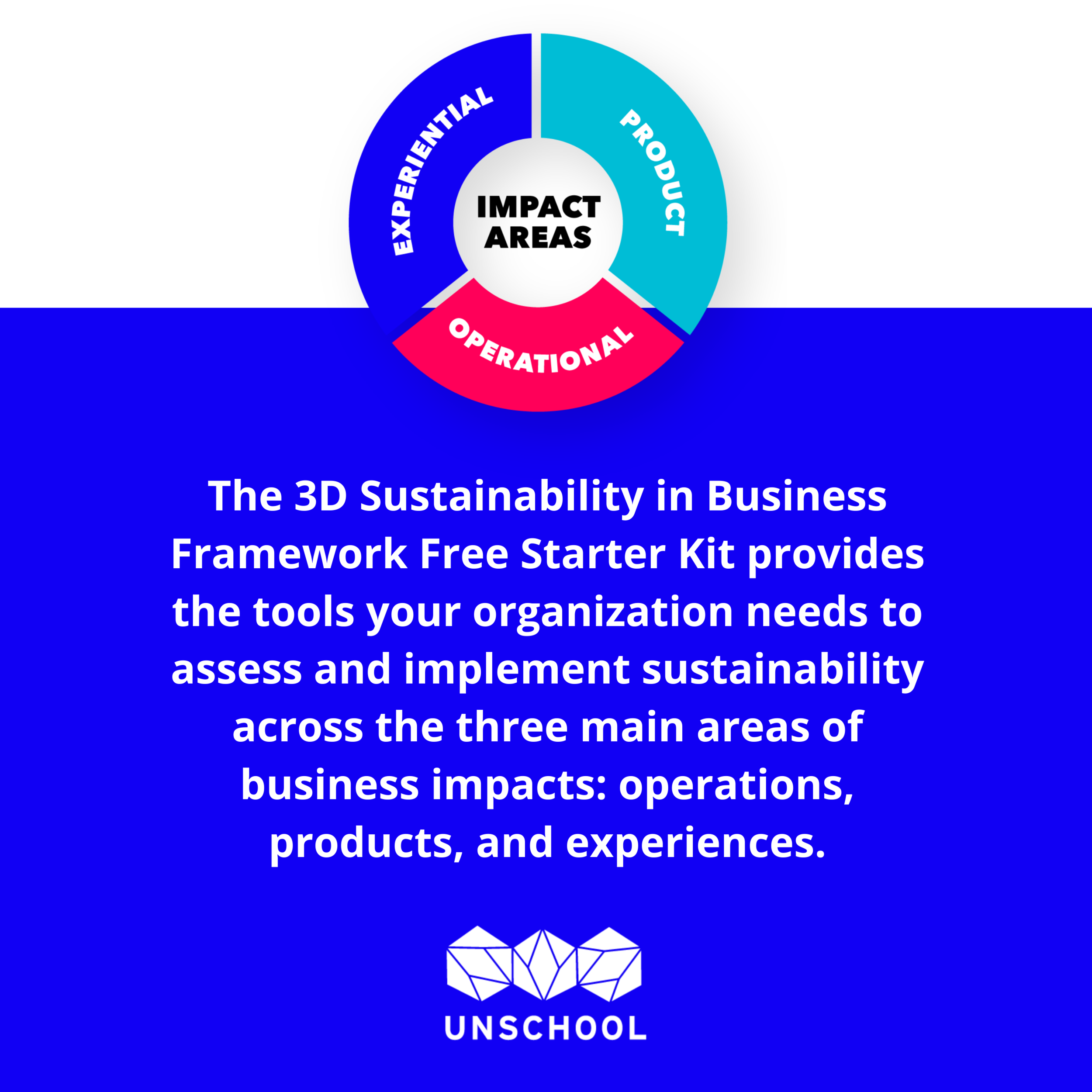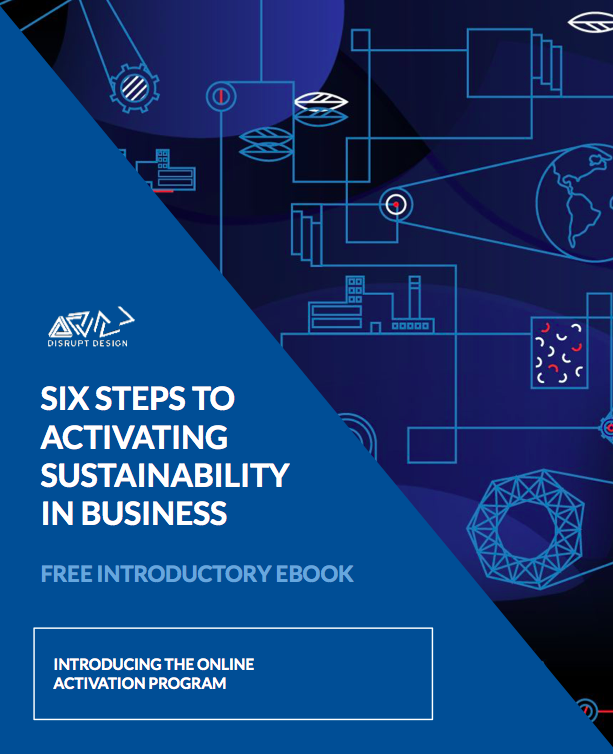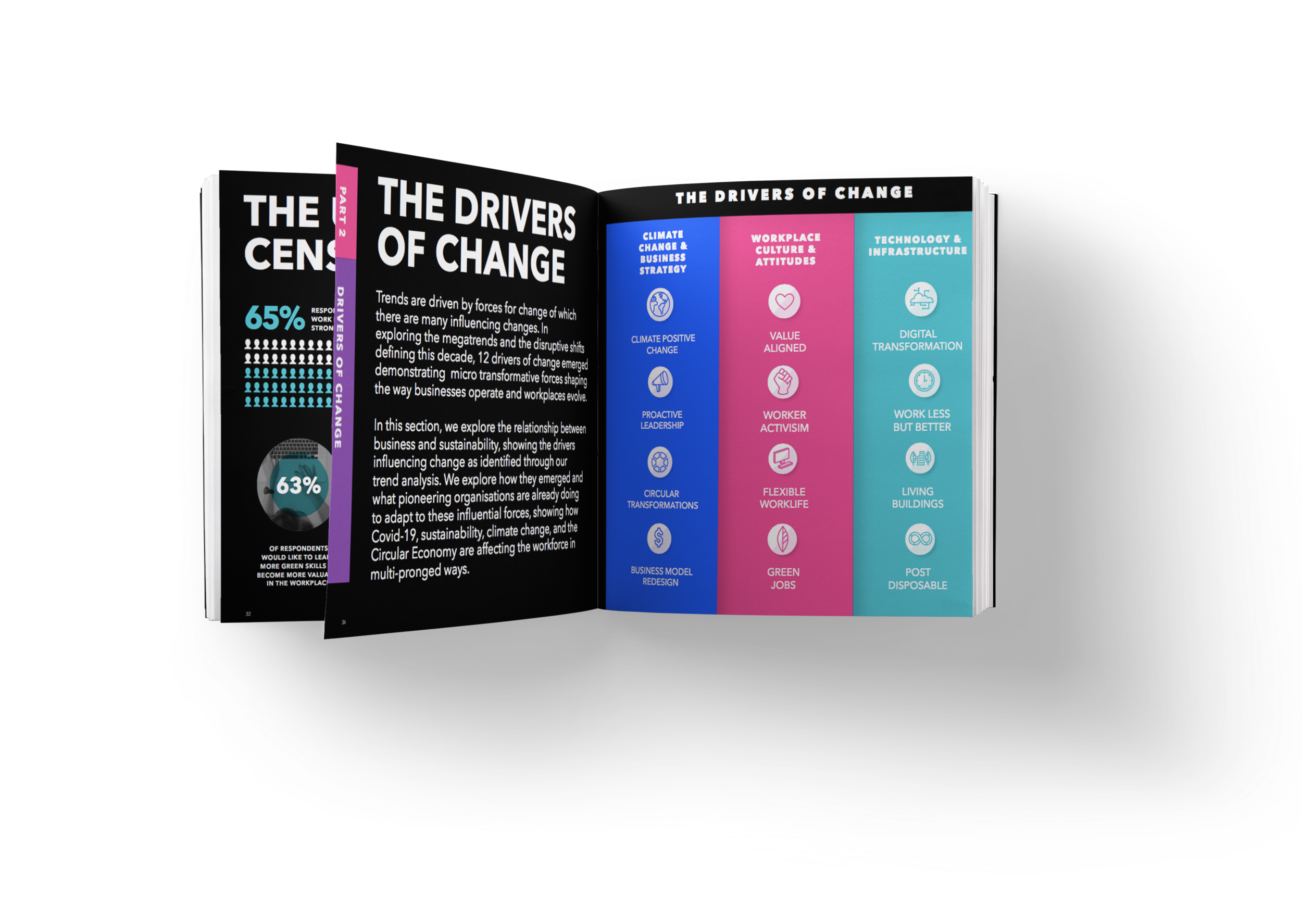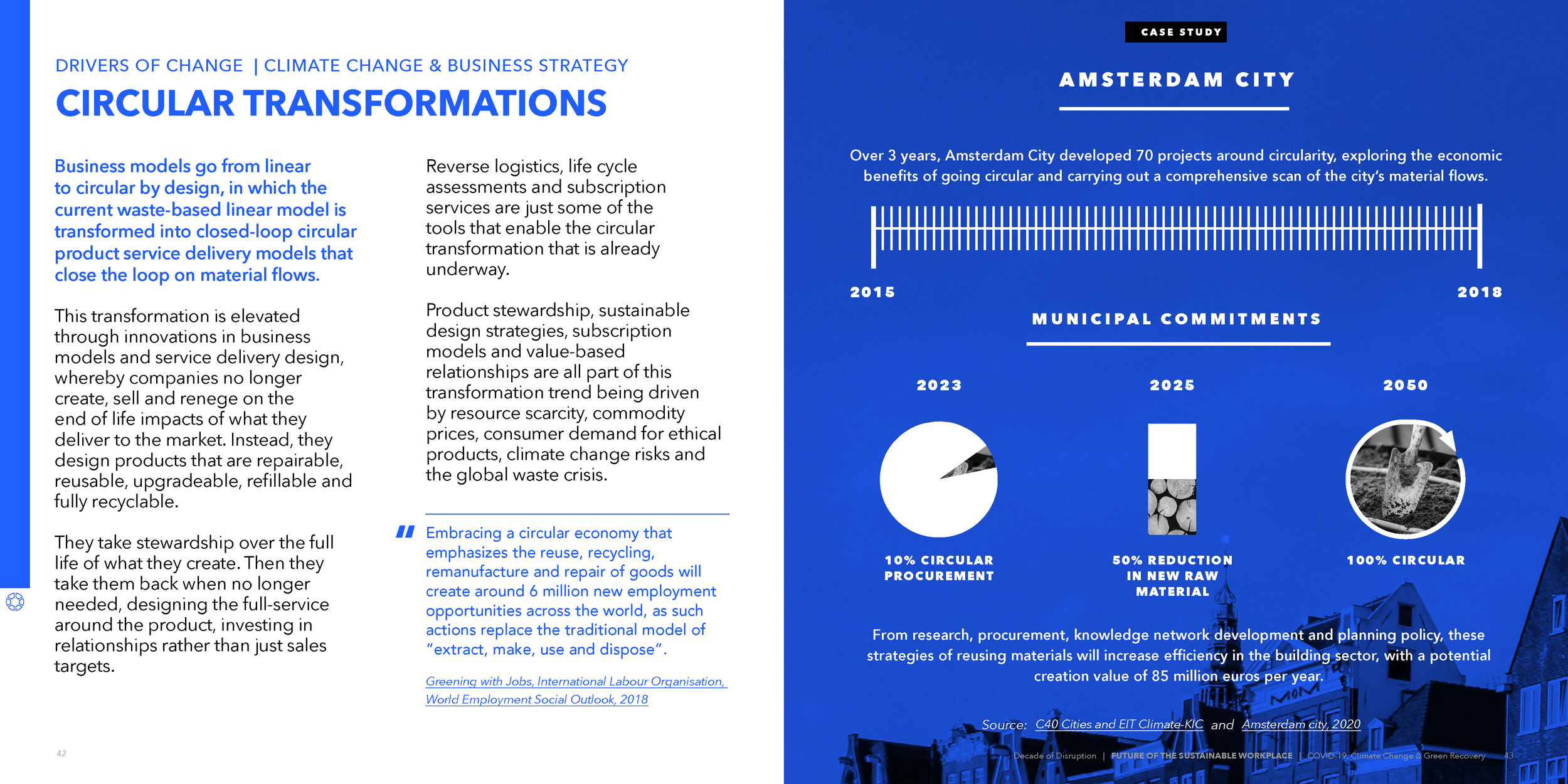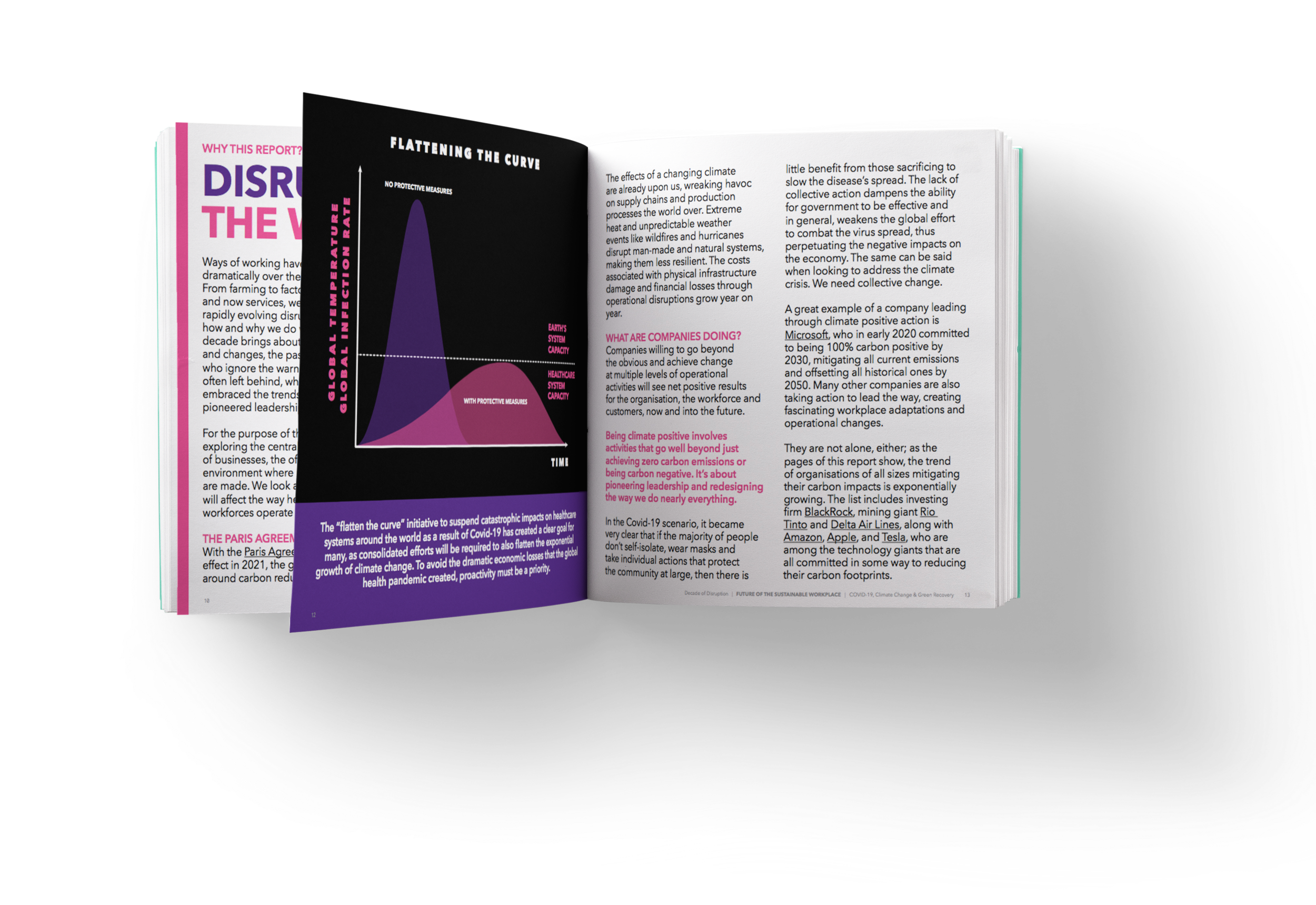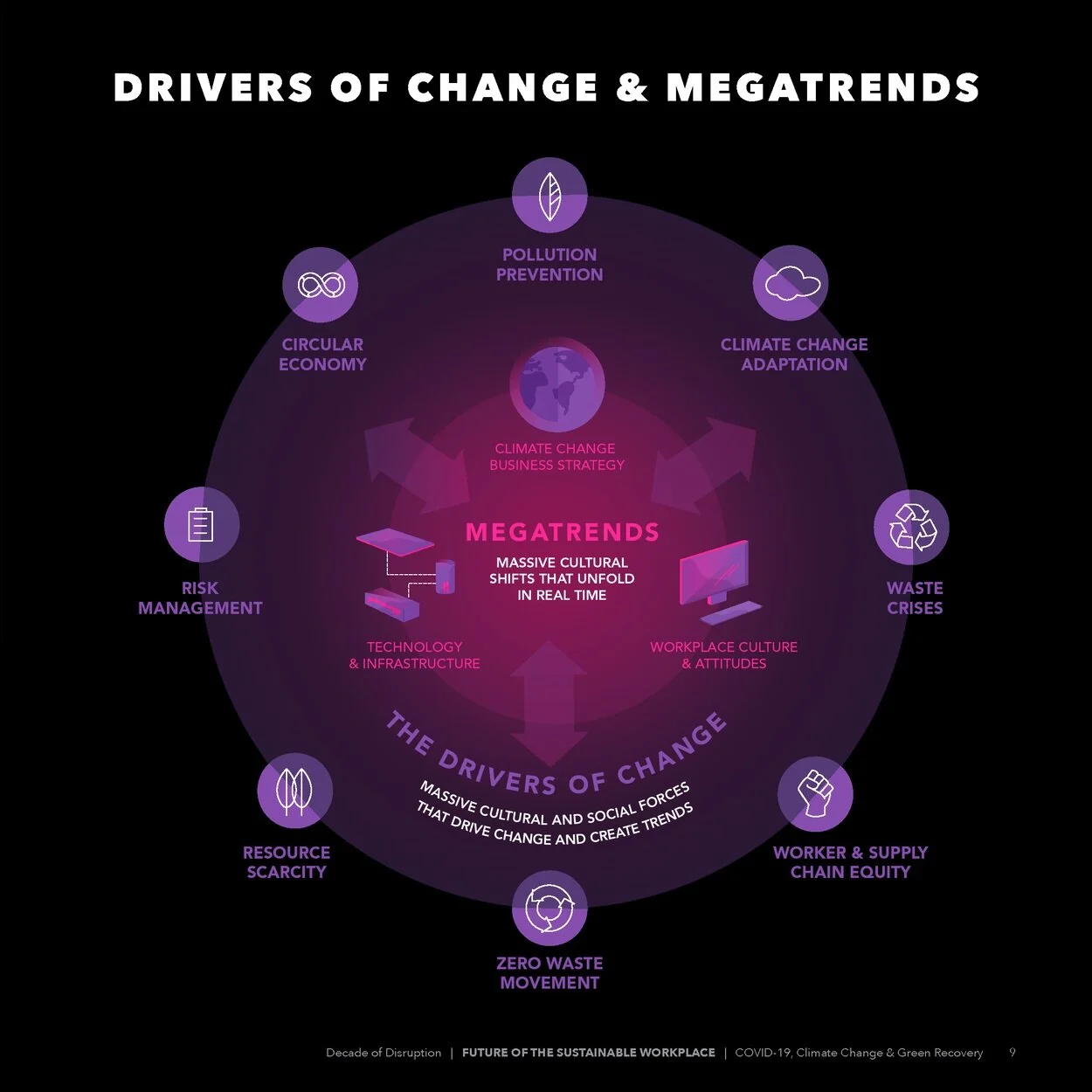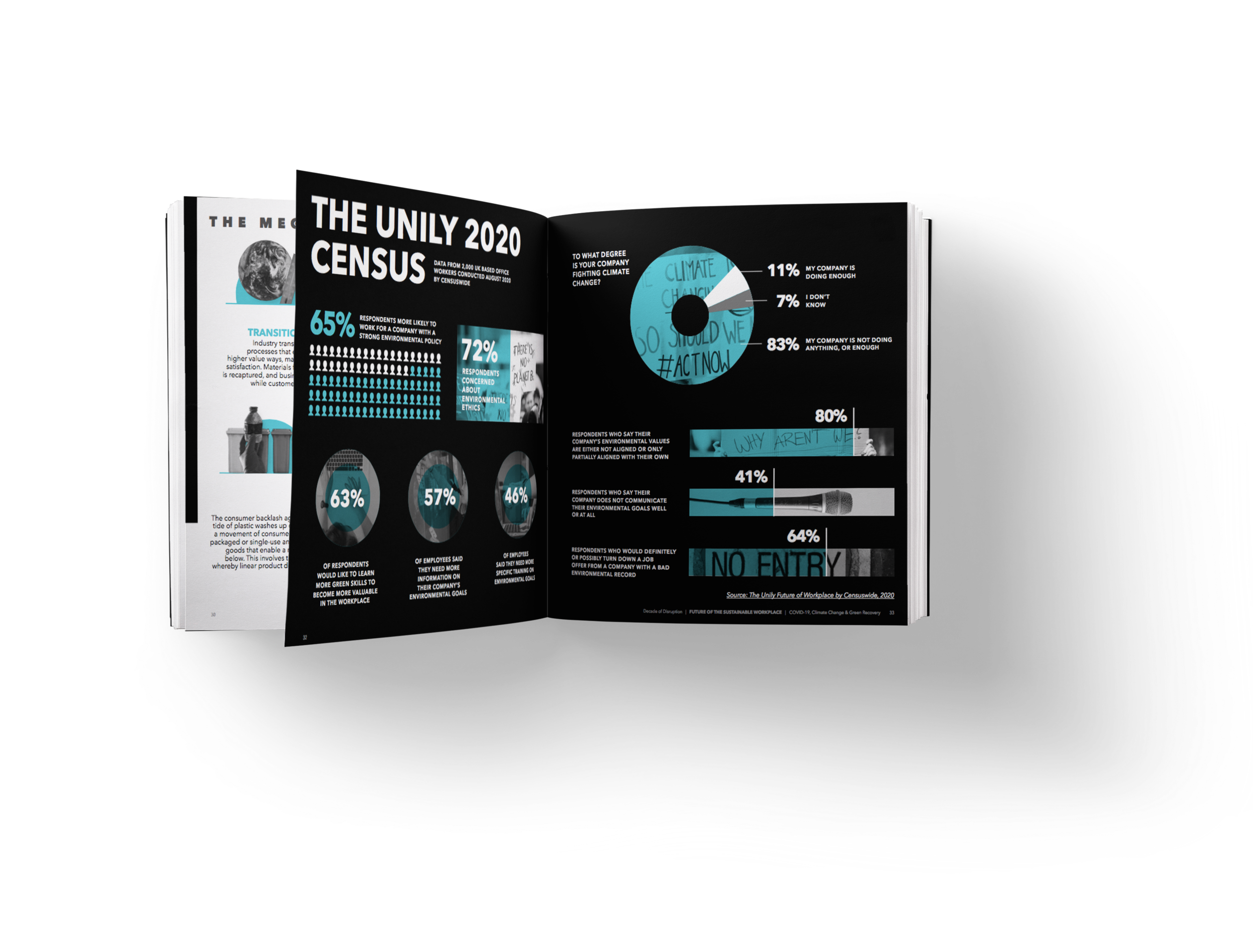Exciting news: we have an amazing new FREE, action-oriented toolkit to share with you to help any organization transform their business practices to be more sustainable and circular.
As part of our Sustainability in Business course series, this new 50-page Starter Kit includes an overview of our 3D framework for assessing, actioning and transforming the operational, product and experiential impacts of any business. Filled with useful content, clear graphics, and several sample worksheets, you can learn the framework and get started on your sustainability journey right away!
The 18 impact arenas explored in the 3D framework for business sustainability
Businesses need to recognize that they play a critical role in the global transformation toward a more sustainable future. The way that they operate the products that they produce and the experiences that they create for their workers and customers all interact with the natural world through supply chains and design choices. Our framework helps dissect these to understand impact areas and then provides the steps for taking action.
In the context of business, sustainability is about ensuring that workplaces, products, business structures and customer experiences are ethical, equitable and economically viable. However, we understand that sustainability is complex and often misunderstood, and it can feel like an overwhelming pursuit for business managers. So, in alignment with our equity mission to continuously release at least 20% of our content and knowledge for free, we are very excited to share our new toolkit that offers up a simple framework for assessment to action.
Behind this toolkit are thousands of hours of workshops, trainings, projects and professional expertise focused on the key impact areas of sustainability in business. You can expect to discover how to understand impacts, assess impacts, and take action right away after utilizing the framework within the starter kit. Then, you can dive deeper if you want by taking our 4-Week Training Sprint that provides more extensive details, actions and activities to advance your knowledge and capacity for activating sustainability in business.
The framework was developed by Dr. Leyla Acaroglu and draws on her years of experience in conducting environmental impact assessments and supporting businesses through their sustainability journey. The framework has three main components, providing a more holistic perspective of where impacts occur and how they can be addressed — all assembled into an easy-to-follow, 3-step framework.
STEP 1: UNDERSTAND IMPACTS
This section of the toolkit provides an overview of the impact areas; operations, products and experiences. There are 18 common domains for consideration from energy, waste and water to direction and engagement of your customers. At each of these business areas there are impacts occurring and opportunities to design more sustainability outcomes. Assessing them illuminates these impact areas and gives you a starting point for recognizing the opportunities you have to make change.
STEP 2: ASSESS IMPACTS
After you've started to understand and identify the impacts your organization has, you can move to a more detailed assessment phase in order to develop your first set of benchmarks to understand current impacts and have a baseline to measure future progress against. There are many ways of assessing impacts in detail, but our 3D framework offers three main tools for assessment: sustainable supply chains, environmental auditing and sustainable design strategies. The starter kit provides you with simple worksheets to get you started. Our online learning system also offers a more advanced toolkit included in the 4-week sprint.
STEP 3: TAKE ACTION
Post-assessment, the final section of the toolkit helps you set goals and clear pathways for change, as well as develop policies and create action plans that activate your reporting and promote continual improvement on your sustainability journey.
Remember, sustainability is a process of transformation, with many untapped opportunities just waiting for you to uncover them. In the final section of the toolkit, we offer up our self-assessment tool that provides you with a place to continually check your progress and encourage you toward your sustainability goals.
Whatever you are at now, just starting out or leading the way, your current position should not be the end of your actions — it’s the beginning. The journey to a better future is always ongoing.




